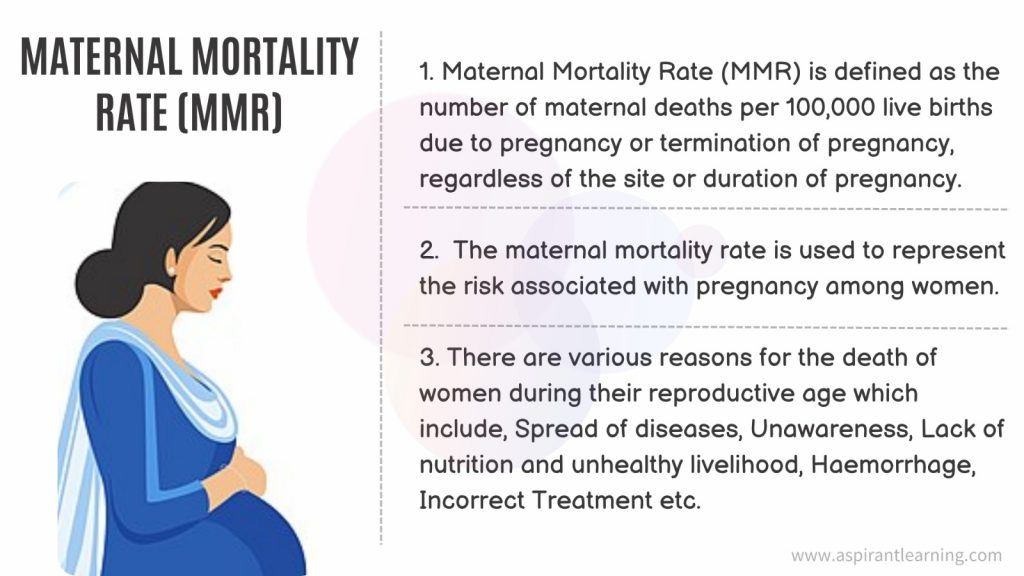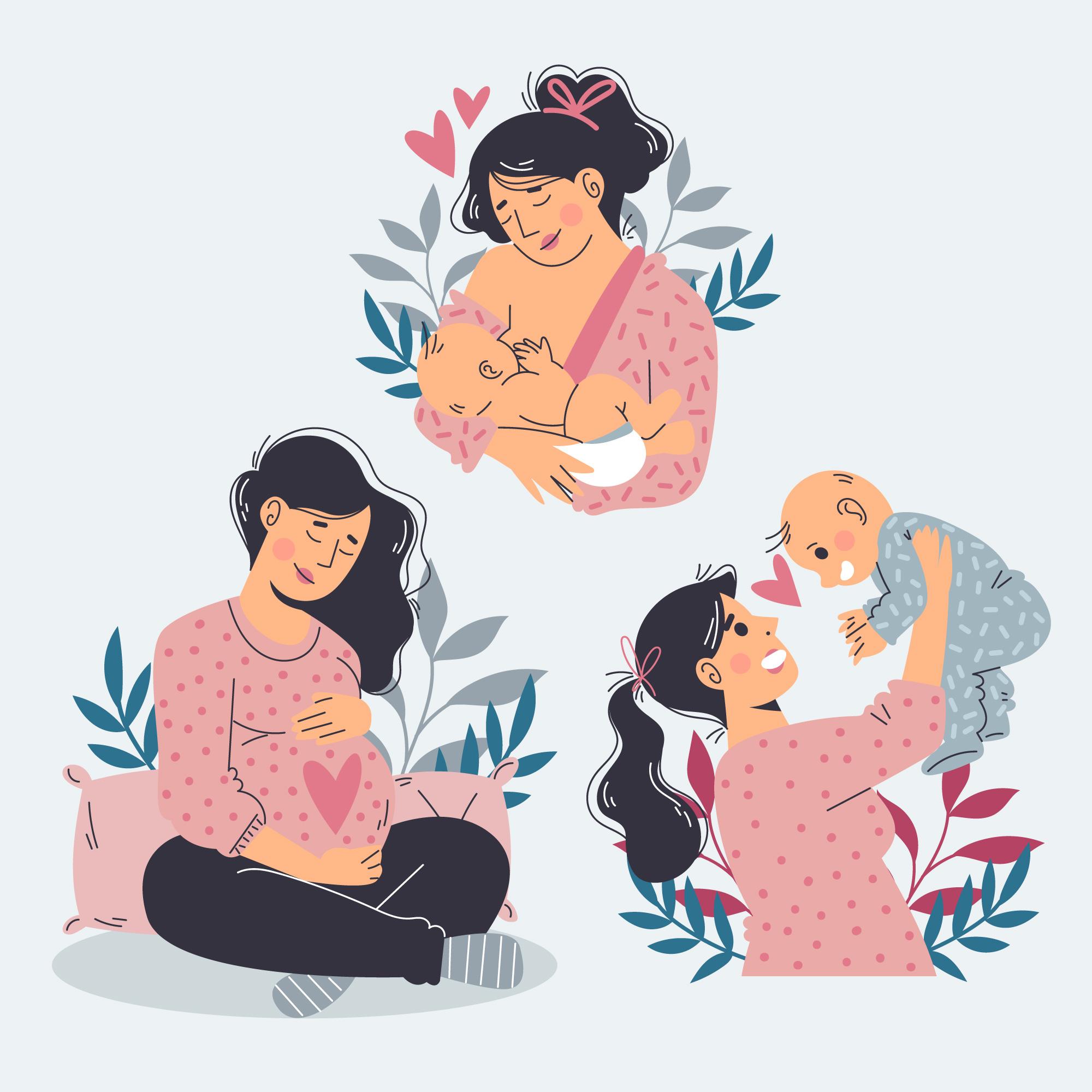News Highlights:
- According to a United Nations report, of the predicted 287,000 maternal deaths recorded in 2020, 70 per cent (202,000) occurred in sub-Saharan Africa.
- The maternal mortality ratio (MMR) in the region was at a dangerous high of 545, many times greater than the world average of 223.

Key Findings of the Report:
- Key statics:
- Every day in 2020, almost 800 women died from preventable causes related to pregnancy and childbirth.
- Maternal death occurred almost every two minutes in 2020.
- Between 2000 and 2020, the maternal mortality ratio (MMR, number of maternal deaths per 100 000 live births) dropped by about 34% worldwide.
- Almost 95% of all maternal deaths occurred in low and lower-middle-income countries in 2020.
- Care by skilled health professionals before, during and after childbirth can save the lives of women and newborns.
- Maternal mortality ratio (MMR):
- The maternal mortality ratio (MMR) in sub-Saharan Africa is dangerous high of 545, many times greater than the world average of 223.
- The top three sub-regions in the world with a high or very high MMR were found in sub-Saharan Africa: Western Africa at 754, middle Africa at 539 and eastern Africa at 351.
- On the country level, a similar trend was seen with South Sudan (1,223), Chad (1,063) and Nigeria (1,047) recording an extremely high — greater than 1,000 — MMR.
- With approximately 82,000 maternal deaths in 2020, Nigeria accounted for over a quarter (28.5 per cent) of all estimated global maternal deaths in the pandemic year.
- Moreover, of the 10 countries estimated to have very high MMR in 2020.
- Findings Related to India:
- India recorded the second-highest number of maternal deaths in 2020, coming second at 24,000 to only Nigeria.
- However, there has been an overall reduction of 73.5% in MMR in India between 2000 and 2020.
- In 2020, India’s MMR stood at 103, a vast improvement from 384 at the turn of the century.
- In comparison, other developing countries like Argentina (45 in 2020), Bhutan (60), Brazil (72), Kyrgyzstan (50) and the Philippines (78) have performed better than India.
- Causes of Maternal Deaths:
- severe bleeding (mostly bleeding after childbirth);
- infections (usually after childbirth);
- high blood pressure during pregnancy (pre-eclampsia and eclampsia);
- complications from delivery; and
- unsafe abortion
Where do maternal deaths occur?
- Low-income countries:
- The high maternal mortality rate in various regions reflects unequal access to high-quality healthcare services and emphasises economic inequality.
- The MMR in low-income countries in 2020 was 430 per 100 000 live births versus 12 per 100 000 live births in high-income countries.
- Women in low-income countries have a higher lifetime risk of death of maternal death.
- A woman’s lifetime risk of maternal death is the probability that a 15-year-old woman will eventually die from a maternal cause. In high-income countries, this is 1 in 5300 versus 1 in 49 in low-income countries.
- Conflict and fragile states:
- Conflict and fragility adversely affect the lives of millions.
- Conflict-affected and fragile countries had the worst maternal mortality ratio per 100,000 live births, with estimates of 1150; in South Sudan, 1140; and in Chad, 829.
Government Initiatives:
- Anaemia Mukt Bharat (AMB):
- Anaemia Mukt Bharat (AMB) strategy was launched in 2018 to reduce anaemia prevalence among children, adolescents and women in the reproductive age group.
- Surakshit Matratva Ashwasan (SUMAN):
- The Surakshit Matritva Aashwasan (SUMAN) was launched by the Ministry of Health and Family Welfare in 2019.
- It aims to provide assured, dignified and respectful delivery of quality healthcare services at no cost and zero tolerance for denial of services to any woman and newborn visiting a public health facility to end all preventable maternal and newborn deaths and morbidities and provide a positive birthing experience.
- Anmol app:
- It is a multifaceted mobile tablet-based android application of the Ministry of Health & Family Welfare (MoHFW) for early identification and tracking of the individual beneficiary.
- The application would help to ensure the tracking of beneficiaries for proper health care and promote family planning methods being adopted by them.
- The system also facilitates to ensure timely delivery of full competence of antenatal and postnatal & delivery services and the tracking of children for complete immunisation services.
- LaQshya – Labour Room Quality Improvement Initiative:
- This program focuses on Public Health facilities to help. They will be assisted by helping them improve their maternity operation theatres and help augment the quality of care in labour rooms.
- This program will be implemented in all Community Health Centres (CHC), First Referral Units (FRU), District Hospitals, and Medical College Hospitals.
- Janani Suraksha Yojana (JSY):
- The Government of India completely sponsors this scheme.
- Janani Suraksha Yojana comes under the National Health Mission.
- Pradhan Mantri Surakshit Matritva Abhiyan (PMSMA):
- This program was launched with the objective of detecting and treating cases of anaemia.
- Pradhan Mantri Matru Vandana Yojana (PMMVY):
- Pradhan Mantri Matru Vandana Yojana (PMMVY) is implemented by the Ministry of Women and Child Development.
- This Maternity Benefit Program is implemented in all districts.
- On fulfilling certain conditions, the beneficiaries would receive Rs 5,000 in 3 instalments.
- Cash benefits would be directly transferred to the beneficiaries bank accounts.
Pic Courtesy: Freepik
Content Source: Down To Earth



